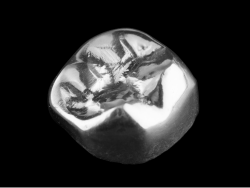Crown and Bridge Dental Lab: A Comprehensive Guide

As a dental professional, I have always been fascinated by the intricate work done in crown and bridge dental labs. These specialized laboratories play a crucial role in creating high-quality dental restorations that improve patients’ oral health and aesthetics.
The Role of Dental Laboratory Crown and Bridge

dental laboratory crown and bridge services involve the fabrication of custom-made prosthetic devices to replace missing teeth or restore damaged ones. These restorations are meticulously crafted to match the patient’s natural teeth in terms of color, shape, size, and functionality.
The process begins with taking impressions or digital scans of the patient’s mouth. Skilled technicians then use these records to create precise models that serve as a blueprint for crafting crowns, bridges, or implant-supported restorations.
In the lab, various materials such as porcelain fused to metal (PFM), zirconia, or all-ceramic are used to fabricate the final restorations. Technicians employ advanced techniques like computer-aided design/computer-aided manufacturing (CAD/CAM) systems for enhanced precision and efficiency.
Once completed, these custom-made restorations are sent back to dentists who cement them onto prepared teeth or implants. The result is a seamless smile restoration that not only improves oral function but also enhances patients’ self-confidence.
The Advancements in Crown and Bridge Dental Lab Techniques
Over time, crown and bridge dental labs have witnessed significant advancements in their techniques. One notable evolution has been the shift from traditional analog methods to digital workflows.
Digital technology has revolutionized every aspect of dentistry – including crown and bridge fabrication. With intraoral scanners becoming more prevalent in dental practices today, capturing accurate digital impressions has become faster and more comfortable for patients.
Furthermore, CAD/CAM systems have streamlined the design and manufacturing process in dental labs. Technicians can now create virtual models, make adjustments digitally, and mill restorations with utmost precision. This digital workflow not only saves time but also ensures consistent quality in every restoration produced.
Additionally, advancements in materials have expanded the options available to both technicians and patients. From traditional PFM crowns to metal-free alternatives like zirconia or lithium disilicate, dental laboratories can provide a wide range of esthetic solutions that cater to individual patient needs.
Eurasia Dental: A Leader in Crown and Bridge Dental Lab Services
One prominent name in the crown and bridge dental lab industry is Eurasia dental. With years of experience and a commitment to excellence, Eurasia dental has established itself as a leader in providing top-notch restorative solutions.
Their team of highly skilled technicians utilizes state-of-the-art technology combined with meticulous craftsmanship to deliver superior results. Whether it’s fabricating single crowns or complex implant-supported bridges, Eurasia Dental consistently meets the highest standards of quality.
Moreover, their dedication to continuous education ensures that they stay up-to-date with the latest advancements in materials and techniques. This allows them to offer innovative solutions that enhance both function and aesthetics for their clients’ patients.
In Conclusion
Crown and bridge dental labs play an integral role in creating custom-made restorations that improve oral health while restoring natural smiles. removable dentures from analog methods to digital workflows has revolutionized this field by enhancing accuracy, efficiency, and versatility.
Eurasia Dental stands out as a leading provider of crown and bridge dental lab services due to their commitment to excellence through advanced technology integration coupled with expert craftsmanship. With their expertise, patients can confidently rely on the superior quality of restorations they receive.




